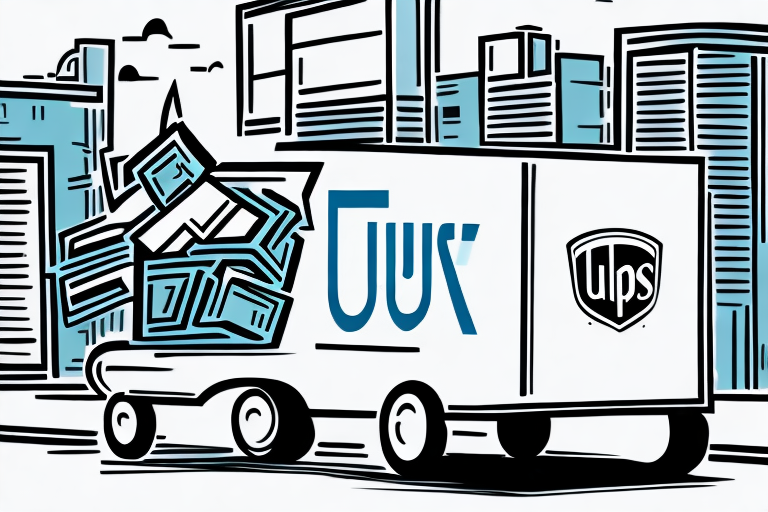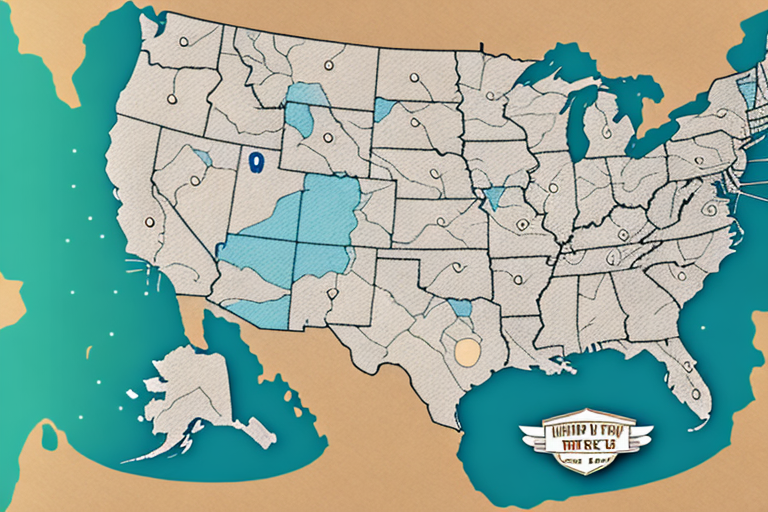Understanding FedEx Shipping Charges and Policies
Are you wondering when FedEx charges for shipping? Whether you are a business shipping products or an individual sending a package, understanding FedEx's shipping charges and policies is essential. In this comprehensive guide, we will take you through everything you need to know about FedEx's shipping charges, policies, factors that affect shipping costs, and tips for reducing fees.
Overview of FedEx's Shipping Charges
FedEx's shipping charges are calculated based on several factors, including the package's weight, size, destination, and shipping speed. The company offers a variety of shipping options, such as same-day, next-day, 2-day, and ground delivery. Each package's shipping cost is determined by applying a base rate, fuel surcharge, and any additional fees associated with specific services like residential delivery or signature confirmation.
In addition to standard shipping options, FedEx offers specialized services tailored to specific industries. For instance, FedEx Healthcare Solutions provides temperature-controlled shipping for medical supplies and equipment, while the FedEx Dangerous Goods division handles the transportation of hazardous materials, such as chemicals and batteries.
Customers can track their packages in real-time using FedEx's online tracking system, which provides updates on the package's location, estimated delivery time, and any delays or issues that may arise during transit. Additionally, FedEx offers a money-back guarantee for certain services, such as express shipping, ensuring packages are delivered on time.
FedEx Shipping Policies Explained
FedEx has specific policies that determine the availability of shipping services to certain destinations, as well as the maximum weight and size of packages. For example, FedEx utilizes a dimensional weight calculator that compares a package's weight and size to determine which is more significant, charging based on that measurement. Furthermore, FedEx imposes restrictions on the types of items that can be shipped, including hazardous materials.
FedEx offers various shipping options, including same-day delivery, overnight delivery, and international shipping. Customers can choose from a range of delivery speeds and prices to fit their needs. FedEx also provides tracking information for all packages, allowing customers to monitor their shipment's progress and estimated delivery time. It's important to check FedEx's policies before selecting a shipping method, as some options may not be available for certain destinations or package sizes.
How FedEx Calculates Shipping Costs
Calculating FedEx shipping costs involves multiple factors such as package size, weight, destination, and the chosen shipping method. FedEx applies a base rate based on the shipping option selected, along with fuel surcharges. Additional services like signature confirmation or insurance will incur extra fees, impacting the overall shipping cost.
The type of item being shipped also influences the cost. Hazardous materials or items requiring special handling may incur additional charges. Additionally, seasonal demand and the time of year can affect shipping rates. It's crucial to consider all these factors when estimating the cost of shipping with FedEx to avoid unexpected expenses.
Factors Affecting FedEx Shipping Charges
- Package Weight and Size: Heavier and larger packages generally cost more to ship.
- Shipping Speed: Faster delivery options like overnight shipping are more expensive than ground or economy services.
- Distance: Shipping to remote or international destinations typically incurs higher fees.
- Additional Services: Services such as insurance, signature confirmation, and specialized handling add to the cost.
- Seasonal Demand: Rates may increase during peak seasons like holidays due to higher demand.
The type of items being shipped also plays a role. Fragile or hazardous items may require special packaging or handling, increasing the shipping cost. Additionally, the level of insurance chosen for your package can impact the overall fees, with higher coverage levels leading to higher costs.
Estimating and Reducing FedEx Shipping Costs
To estimate your FedEx shipping costs, utilize the company's online shipping calculator, which considers your package's weight, size, destination, and shipping speed. FedEx also provides a shipping rates chart to help you compare the costs between different services and weights.
FedEx offers discounts for frequent shippers or businesses that ship in large volumes, which can significantly reduce shipping costs. Additionally, using the appropriate packaging can help save money; for example, using a padded envelope instead of a box for small items can be more cost-effective.
Tips for reducing FedEx shipping fees include:
- Bundling Shipments: Combining multiple packages into one shipment can lower overall costs.
- Choosing Slower Shipping Speeds: Opting for ground or economy shipping instead of express services.
- Requesting Package Pickup: Utilizing FedEx's pickup services instead of dropping off packages at locations.
- Leveraging Online Shipping Tools: Using FedEx's online tools to find the most cost-effective shipping options based on your package's specifications.
Comparing Domestic and International Shipping Rates with FedEx
The cost of shipping varies significantly between domestic and international destinations. International shipping rates are generally higher due to factors like customs fees, longer transit times, and additional handling requirements. To compare FedEx's domestic and international shipping rates, use the FedEx international shipping calculator or consult with a FedEx representative.
For domestic shipments, FedEx offers services such as same-day, overnight, and two-day shipping options. Internationally, FedEx provides options like International Priority, International Economy, and International First shipping, each with varying delivery times and costs.
Choosing the appropriate packaging is crucial for both domestic and international shipments. FedEx offers a variety of packaging options, including envelopes, boxes, and tubes, to ensure your package arrives safely and securely at its destination.
Common Mistakes and How to Avoid Them in FedEx Shipping
Several common mistakes can lead to increased FedEx shipping costs:
- Underestimating Package Weight or Size: Always accurately measure and weigh your packages to ensure correct billing.
- Selecting Unnecessary Services: Avoid paying for services you don't need, such as signature confirmation for non-valuable items.
- Poor Package Preparation: Improperly packed items can lead to damage, delays, and additional fees.
- Incorrect Labeling: Ensure all package labels are accurate to prevent delays or returns, which can incur extra costs.
- Neglecting Customs Documentation: For international shipments, missing or incorrect customs paperwork can result in fines and delayed deliveries.
To avoid these mistakes, meticulously prepare your shipments by verifying all details and utilizing FedEx's resources to understand their requirements fully.
Avoiding Hidden Fees in Your FedEx Shipping Bill
Hidden fees can unexpectedly inflate your FedEx shipping bill. Common hidden costs include:
- Fuel Surcharges: Additional fees applied to account for fluctuating fuel prices.
- Residential Delivery Fees: Extra charges for delivering to residential addresses.
- Additional Handling Fees: Fees for handling items that require special care or equipment.
To avoid these hidden fees:
- Use Online Tools: Utilize FedEx's online calculators to get accurate estimates before shipping.
- Choose Flat-Rate or All-Inclusive Pricing: Opt for shipping services that offer flat-rate or all-inclusive pricing to prevent unexpected charges.
- Review Service Options Carefully: Understand the fees associated with each service to make informed decisions.
Negotiating Better Rates with FedEx for Your Business
If you frequently ship with FedEx, you may have the opportunity to negotiate better shipping rates for your business. To negotiate effectively:
- Gather Shipping Data: Collect data on your shipping volume, frequency, and expenses.
- Contact a FedEx Representative: Present your shipping data and discuss potential discounts or customized shipping arrangements.
- Explore FedEx Loyalty Programs: Participate in FedEx's loyalty programs that offer benefits and discounts to regular shippers.
Keep in mind that negotiating better rates may be more feasible for businesses with higher shipping volumes. Even if your shipping volume is low, it's still worth reaching out to FedEx representatives to inquire about any available promotions or discounts.
Alternatives to Consider for Cheaper Shipping Options
If you are looking for more cost-effective shipping options, consider the following alternatives:
- USPS: The United States Postal Service often provides competitive rates for smaller packages and offers various shipping options.
- UPS: United Parcel Service offers a range of services similar to FedEx and can sometimes provide better rates for specific shipping needs.
- Regional Carriers: Regional carriers specialize in specific areas and may offer lower rates for shipments within their regions.
- E-commerce Platform Discounts: Many e-commerce platforms partner with carriers to offer discounted shipping rates to their users.
It's essential to weigh the advantages and disadvantages of each service to determine which best fits your shipping needs. Compare rates, delivery times, and service offerings to find the most cost-effective solution for your business.
By understanding FedEx's shipping charges and policies, and by exploring alternatives and strategies to reduce costs, you can make informed decisions that optimize your shipping expenses while ensuring your packages arrive safely and on time.








